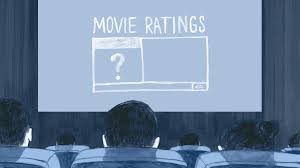The Movie Rating System

Image Credit: liveabout.com
Movies and TV shows have become a huge part of daily entertainment. Over the past two years due to the coronavirus many people find comfort in the movies and TV shows that have been released. For example, Soul, Tiger King, and Squid Game all made record worthy amounts of money–and they were all released during the pandemic.
Since media entertainment has become more a part of people’s daily lives, many started to really pay attention to the MPAA (Motion Picture Association of America) rating. Ratings such as R (Restricted to children under 17), PG-13 (Parental Guidance suggested for children under 13), PG (Parental Guidance suggested – some material may not be suitable for young children), and TV-MA (Mature Audience only) have been used by the MPAA in the past and act as an easy indication whether or not a movie is appropriate for said watcher. While many use these ratings to make a decision on whether a movie is appropriate to watch, some feel that the rating system is flawed.
With that being said, the rating system is just a suggestion and is not mandatory. This means that the rating system doesn’t have to be enforced. When looking at the MPAA system, it explains each rating and what it does–but also shows a huge flaw with the ratings. The R rating is to let people know that whatever they’re about to watch will contain inappropriate content not allowed for children. Though this is true, many people have found that some movies that are rated R don’t meet all of the guidelines of a rated R movie. This also means that some other movies are underrated. For example, a PG-13 rated movie could reach the standards of a higher rated movie but are still passed on to be an age appropriate film. Another problem with the rating system is that recently, people have come to believe that some movies are overrated because of the contents they contain. Clearly, the MPAA ratings, while just a suggestion, aren’t as accurate as they should be and need to be improved.
